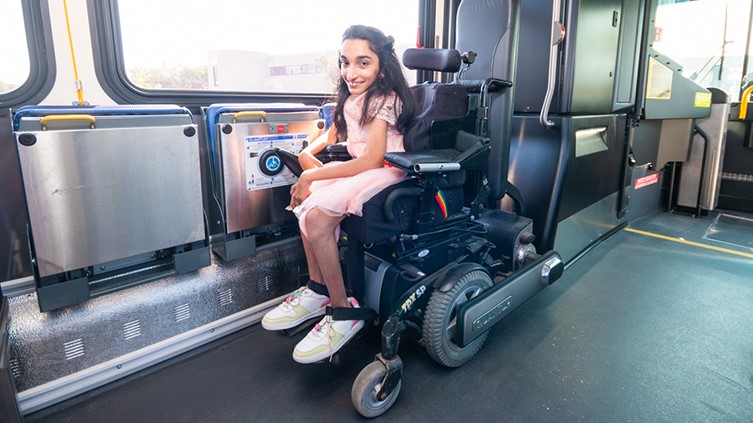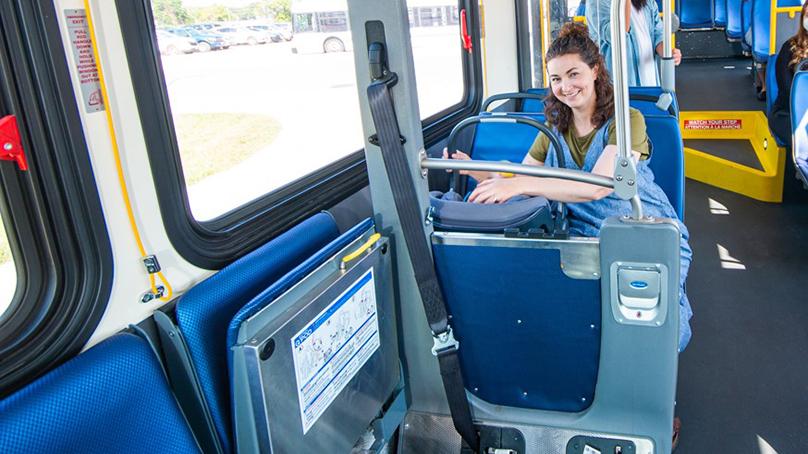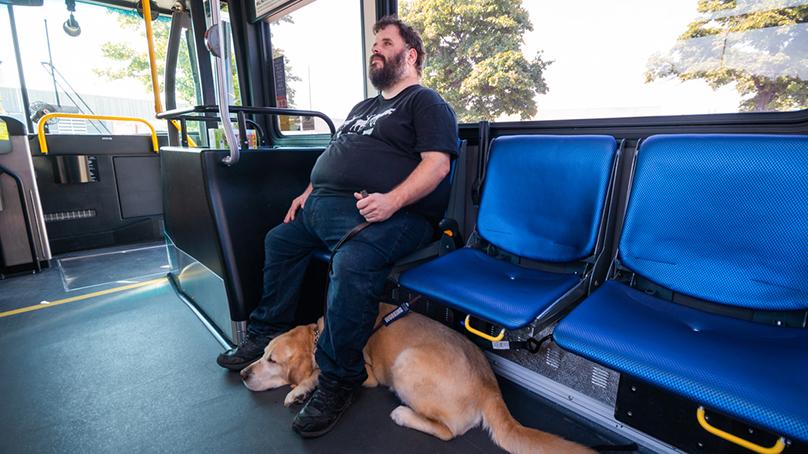
A new policy aimed at improving access to Transit for passengers with disabilities is now in effect, and those who are able may get a reminder to ‘stand up for your fellow rider’ when the priority seating area is needed.
With a public education campaign well underway, the next phase in the introduction of the Priority and Courtesy Seating Policy went into effect October 5. Operators will now play an automated message asking passengers to vacate the Priority Seating Area when it is required by the passengers it is designated for – people with disabilities.
Up to this point, the Priority Seating Area – the seats located closest to the front of the bus, which are designed to accommodate wheelchairs – has been available on a first come, first served basis. But with upcoming legislation under the Accessibility for Manitobans Act requiring seats to be designated for passengers with disabilities, the policy now makes it clear that this seating area is to be made available to passengers with disabilities first, whether the disabilities are visible or invisible.
Other passengers who benefit from a seat near the front of the bus, such as seniors, people who are pregnant and those who are travelling with young children, can sit in the courtesy seating area, which in the current bus design are the forward-facing seats located directly behind the priority seating area. Future bus orders will feature a new design with more flexible seating options in the courtesy seating area.
Passengers who don’t have disabilities can sit in the priority seating area if it isn’t needed by a passenger with a disability, but should be prepared to move if asked. No one will be expected to leave the bus to make room.
Other changes under the policy include defined size guidelines for wheelchairs and scooters, a requirement that strollers be capable of being folded and stowed, if necessary, without blocking aisleways, and accessible boarding – that means allowing passengers with disabilities to board the bus first. Passengers can expect to hear an accessible boarding reminder outside buses equipped with external speakers.
While the new policy won’t be enforced by Operators or other transit employees, passengers are asked to recognize that following the policy can help people access the bus who may not be able to otherwise. The choice to ‘Stand up for your fellow rider’ is a choice to work together to ensure transit is accessible for all.


